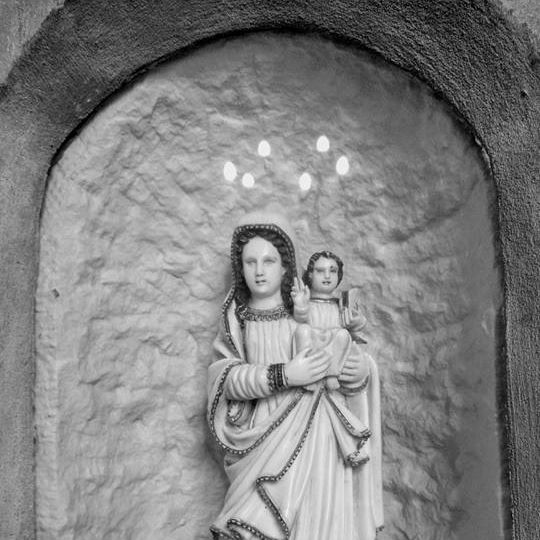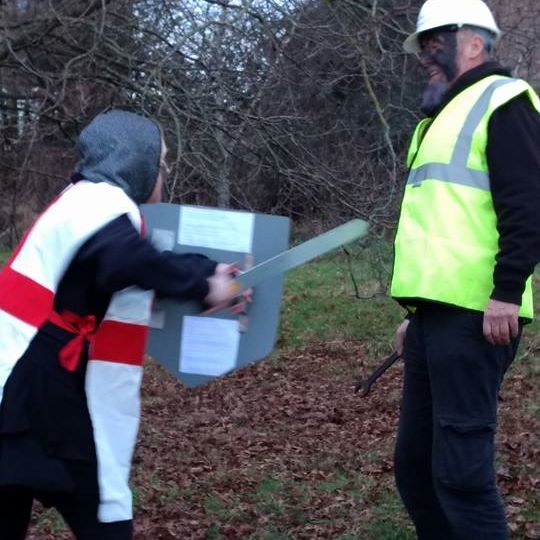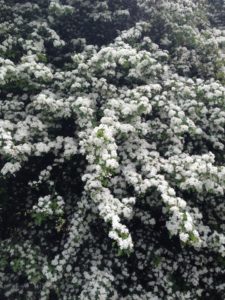Did you take your Yule/Christmas decorations down yesterday? If you didn’t then best leave them up until Candlemas day (2nd February) or Imbolc if you prefer its other name. Why? well tradition has it that if you don’t take your decorations down before the 5th/6th then it’s bad luck. The only way to mitigate it is to then leave them until the next cross quarter. Of course the superstition isn’t really that old, but its been around long enough that there is some energy in the myth so I tend to stick with it.

It sort of makes sense as well, if you look at the meaning behind each of these dates. Epiphany or 12th night was supposed to be the night when the Magi made it to Bethlehem to visit the Baby Jesus in the Manger. After this point of course the whole Nativity is done isn’t it? Actually no it wasn’t. Historically the festival continued all the way through to Candlemas, which was the feast that celebrated the purification of the Virgin Mary and also the baptism of Jesus (in the olden days women had to sequester themselves until they had stopped post-partum bleeding as it was considered unclean).
12th night is also the night to Wassail the Orchards an entirely much older and far more Pagan an affair; but one in certain parts of the British Isles that is still celebrated today. Region to Region there are variations on a theme; some go and sing to the trees and have them blessed so that there may be a good harvest in the coming year; others soak bits of toast in apple juice and bury them at the roots, or hang them from the branches of the tree. In some counties the act of wassailing also involves mumming and a large bowl, called a wassail bowl which was passed around by the revellers.

The Mumming plays tend to be rather formulaic and are (at least in my area) very similar to the Soul Caking plays seen in October. There is St. George, A Quack doctor, Beezlebub or a Devil and sometimes also a “Kaiser” who is the typical baddie. Think Doctor Robotnik in Sonic or Dick Dastardly from the Wacky Races for those of us who are a little bit older. Oft times there is also a Hobby horse, although the Soul Cakers in my area combine the Hoss with “Old Nick” the Devil. It’s all very confusing, all very hilarious and all has the same outcome.
The Hero (St George) fights evil and Darkness (The Kaiser), the quack Doc turns up and after a whole number of fumbled attempts revives our erstwhile hero, who leaps up to much joy and cheering from the crowd and defeats the Kaiser, but evil is not to be outdone and Old Nick/Beezlebub turns up and also has a go but eventually is defeated normally with audience participation. It’s the age old tale of light overcoming darkness, which if you consider how blimmin cold and dark it’s been in the last week it’s easy to see that it would have been a welcome relief to those wondering if they had enough fuel and stocks to make it last until the weather started to warm up.
Huzza, Huzza, in our good town
The bread shall be white, and the liquor be brown
So here my old fellow I drink to thee
And the very health of each other tree.
Well may ye blow, well may ye bear
Blossom and fruit both apple and pear.
So that every bough and every twig
May bend with a burden both fair and big
May ye bear us and yield us fruit such a stors
That the bags and chambers and house run o’er.
— Cornworthy, Devon, 1805*
So it doesn’t take a rocket scientist to think about where we are at the moment and the health of ourselves and the world around us right now to realise it’s a battle we are still fighting. Even the reasons for fighting it aren’t that different either, personal sovereignty, survival and community. Folk-lore even the very heavily christianised can give us so much insight which can enhance our practise.
There is some debate as to whether 12th night is the 5th or the 6th of January, and that’s not even taking into account the idea of “Old Epiphany” which in some places is still adhered to (using the Old Julian Calendar) in other winter traditions such as Hen Galen which doesn’t happen until the 13th of January. Therefore a small ritual to bless your home, your land, even the plants that grow on your windowsill or garden. A ritual that hopes for a victory against the dark however we perceive it, a ritual to bring health and blessings is probably just what the doctor order (Quack or not).
Just a slice of toast soaked in Juice or mead placed at the corners of your household boundaries and a shared libation and blessing on the land, it doesn’t have to be complicated.
So here my good fellows, I drink to theeTo the very health of each other, and harmony be
Well may we bend, and well may we bear
The blossoms and fruit of our future so fair!
-adapted from an Old Wassailing chant.
*https://en.wikipedia.org/wiki/Apple_Wassail


 the 1970’s I thought I would try and find other provenance for the nine sacred woods. The Cad Goddeu (or Battle of the Trees) which in its written form dates from somewhere around the 9th-10th century does mention nine trees, or forms related to the creation of the flower maiden Blodeuedd by Math and Gwydion. [2. Kat Goddeu – Legendary Poems from the Book of Taliesin CMCS Aberystwyth] But it also lists many more than nine during the actual battle part of the poem. So whilst the imagery of the flower maiden is a very fitting ritual motif for the folk practise of bringing in the May, it doesn’t really enlighten us any further as to the origins of the sacred woods.
the 1970’s I thought I would try and find other provenance for the nine sacred woods. The Cad Goddeu (or Battle of the Trees) which in its written form dates from somewhere around the 9th-10th century does mention nine trees, or forms related to the creation of the flower maiden Blodeuedd by Math and Gwydion. [2. Kat Goddeu – Legendary Poems from the Book of Taliesin CMCS Aberystwyth] But it also lists many more than nine during the actual battle part of the poem. So whilst the imagery of the flower maiden is a very fitting ritual motif for the folk practise of bringing in the May, it doesn’t really enlighten us any further as to the origins of the sacred woods.